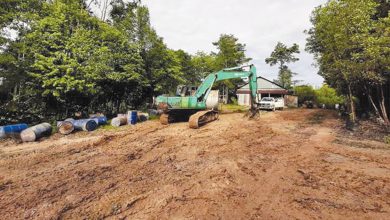Is This Possible?
By Mariam Mokhtar
At the first, post-General Election 13, state assembly sitting last month, Menteri Besar Dato’ Seri DiRaja Zambry Abd Kadir, announced that Perak would become a developed state by 2015.
The optimists on the bench nodded in agreement, a number were less sanguine while some expressed their doubts. Can Perak become a developed state by 2015?
We can still recall the confusion when former Malacca Chief Minister, Ali Rustam, declared that Malacca was a developed state a few years ago. Sometime later this declaration was retracted.
Jon Hall of the Organisation for Economic Cooperation and Development (OECD) said, “The OECD did not endorse the Malacca declaration, mainly because we’re not in a position to do so.” Neither the UN nor the OECD has a definition of a developed state.
Hall also remarked that the press conference and proceedings were in Malay and, therefore, he had no way of interpreting it.
Malaccans had assembled at Stadium Hang Jebat, in Krubong Malacca and welcomed Premier Najib’s televised announcement on the evening of October 20, 2010. The occasion turned sour, as the OECD’s statement contradicted Ali Rustam’s pronouncement.
The Malacca state had declared a public holiday, and organised a fireworks display, but the U-turn caused much confusion and disappointment.
The Perak Maju Plan 2015 was launched alongside the Perak Amanjaya Development Plan in 2008. Their objective was to make Perak a developed state by 2015. The two plans were designed to transform three main aspects of development, namely socio-economic, sectoral and physical.
The Amanjaya Plan broadly followed the concepts of the federal government’s Vision 2020 and covered key result areas which included skills, knowledge, youth participation and environmentally-friendly practices.
The plan aimed to raise the five regions, Hulu Perak, Beriah Valley, Manjung, Ulu Bernam and the Kinta Valley, to an equal level of development.
In April 2011, Zambry announced that both the Perak Maju 2015 and Perak Amanjaya development plans had successfully expanded the state’s economy, reduced poverty and crime rates.
The Amanjaya Plan, according to Zambry, had increased average household income from RM2809 per month in 2009 to RM3548 in 2012. Hardcore poverty rate had been reduced from 0.5 per cent in 2009 to 0.2 per cent in 2012.
However, fluctuating Foreign Direct Investment (FDI) flow into Perak is worrying. In 2009, the FDI was RM399.5 million, it increased to RM1.6 billion in 2010, dipped to RM90 million in 2011 then rose again to RM1.5 billion in 2012. The trend may be the same this year.
Perakeans who were asked if Perak could become a developed state by 2015 appeared doubtful. One pessimistic Ipohite said, “Our wages are depressed and with the recent hike in petrol and diesel prices, cost of living is set to rise. What’s the use of being developed when the ringgit is shrinking!”
Notwithstanding the odds, we ought to give Zambry the thumbs-up for his optimism and conviction.


